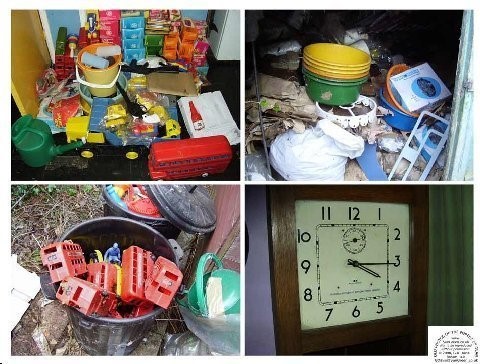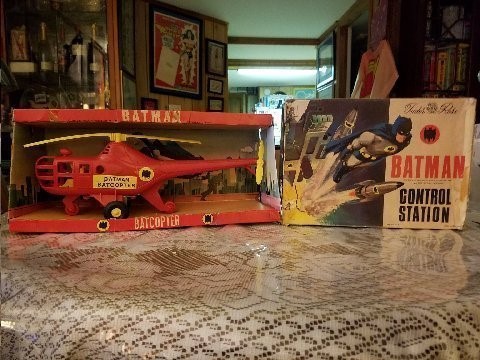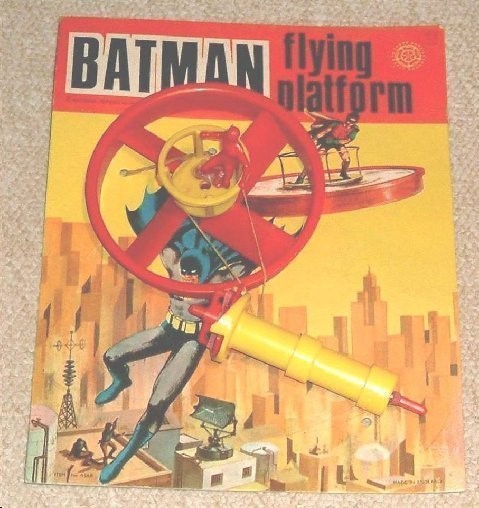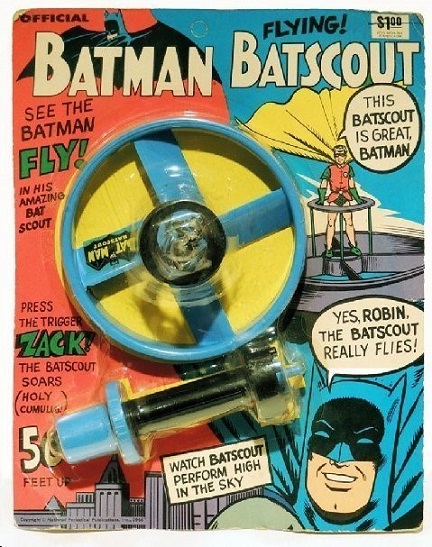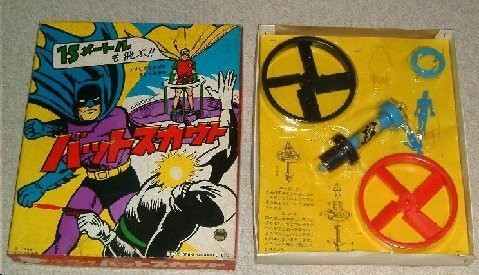
On Wednesday, January 12, 1966 at 7:30 PM American pop culture changed forever as the first of a 2-part episode of the Batman television series debuted on ABC. The show was originally scheduled for the fall of 1966 with a Batman movie coming first in the summer, but the struggling network needed to make changes in its fall schedule and it needed a hit show badly. In Batman they got exactly what they wanted as America experienced the seismic event known as Batmania. The world of comics suddenly became cool and over the next 40 years, comics would become a center piece of America and indeed worldwide popular culture.
Everyone was caught off guard by this, including National Periodical Publications known today as DC Comics. For most of its history as a company it was Superman who was the licensing titan. While it seems that licensing agreements were already underway in the fall of 1965 for Batman, one has to wonder if the DC executives really thought the TV show would do all that it was about to do.
But as the ratings for the first two episodes came in toy, food, gas, jewelry, and companies of all kinds scrambled to get a piece of the action and DC management had to catch up fast. This desire by companies to cash in on the masked manhunter was not confined to the U.S. alone. Companies all over Europe and Asia came calling for licenses to produce Batman items of every imaginable kind. Some of these produced a wide range of items, some only a few and a few only one. Some were licensed and some were not.
The Tudor Rose company was one that both had a license and produced only a few. It operated in Wales in the United Kingdom from 1945 to 1978. Never a large company, its factory was opened in 1945 on Foundry Road in Cinderford, England. Originally it seems that combs, buttons, hair ornaments, molded costume jewelry, nursery items, rattles, toys, fancy goods, and various kinds of novelties were produced.
Over time the company appeared to have specialized in making small dolls, as well as lots of other plastic toys. They sold their dolls at Woolworths in England and according to Grace's Guide to British Industrial History, about three-quarters of the company's products were supplied to Woolworths. This would lead to a sharp reduction in company profits and perhaps was a cause of its going bankrupt in 1975. It must be noted that all their dolls were quite cheap, which may have contributed to its demise.
Overall, today we know very little about the company considering how many different items that it apparently made. We do know that Tudor Rose was a trademark of the Rosedale Company of which it was a division and we know that later the trademark Rosedale Rose was used for the company as well.
Among their toys was a range of hollow hard plastic toys molded into vehicles, including a helicopter which is important here for our story. They later went on to make softer, polythene-type playthings. In 1959 the Kleeware doll company sold out to Rosedale plastics adding to their doll line. Today many Tudor Rose toys are highly valued by collectors. In particular, the space toys they produced are sought after by collectors as they are quite rare, such as their Atomic Space Ray Pistol. Some of the trains, cars, money-boxes, and walking novelty animals they produced are collectible too, but it is the three known Batman items released in 1966 that are the standouts for collectors.
Tudor Rose got its Batman license in 1966. Since then it has become one of the better kept secrets shrouded in many mysteries for Batman collectors.
I recently spoke to Ed Kelly, a noted English Batman collector who filled me in on his experience in collecting and bringing to light the Tudor Rose line of Batman toys and here is what he told me:
“In the early 1990s I owned three Batman items produced by the U.K. toy company Tudor Rose. There was the Control Station, a reworked Space Patrol set that Tudor Rose had manufactured in the 1950s, the Batman Flying Platform, and the Large Tudor Rose helicopter, another modern reworking of an established 1950s toy. The serial numbers were sequential but there was a gap in the middle. So it was a safe bet to assume that there must be at least one more Batman item from the same company. I assumed further that, if they had made a helicopter. it made commercial sense that they would also have made a Batmobile. Based on this I decided to run an ad in the main collectors’ magazines in the U.K. for a Tudor Rose Batmobile. I let the ad run for several years (it was relatively cheap and I was also getting other Batman items at the same time). Then in the late 1990s I got a telephone call! The chap on the other end of the phone asked if I was the person looking for a Tudor Rose Batmobile. I started sweating. I said I was. He then asked me which one? It turned out I had been speaking to the ex-marketing director of Tudor Rose. He told me how, in 1968, he’d been in his office with 600 of each of the company’s new Batmobiles sitting on his desk. There were 600 red ones and 600 smaller yellow ones. All were waiting to be distributed to the salesmen as samples to be taken round to the toy stores on their patches to show storekeepers and to get orders. Unfortunately, those were the only ones ever to see the light of day. A few days after handing out the samples the factory went up in a huge fire and all stocks were destroyed. All the damaged and burned stock was then shoveled into tips and buried. The director did say he would contact as many of the salesmen that were still alive but no Batmobile ever surfaced.”
Kelly is the first Batman collector in the world to collect and bring Tudor's Batman related items to the attention of the Batman collecting community. So far as is known, Tudor produced four Batman toys, as Kelly said. All four of them were produced at the factory in Cinderford, a small town on the eastern fringe of the Forest of Dean in Gloucestershire, England and in which toys and domestic articles were assembled.
The Batmobile never made it into stores because the entire production run that was ready for shipment was destroyed in that fire in 1968. After the factory was destroyed it was not rebuilt, but some plastic components were made in a new building at Steam Mills, which is a village in the Forest of Dean in west Gloucestershire. No one knows what that Batmobile would have looked like beyond the colors. There is a tantalizing mystery associated with this, as these Batmobiles were lost in 1968 in that fire but the other three known Tudor Rose Batman pieces were copyrighted and released in 1966. Was that missing gap in the numbering sequence that Kelly talks about for a Batman toy that has, for whatever reason, never surfaced? At this point we might never know.
The helicopter was the first of the Tudor toys to come to light for Kelly from a seller who found it in an attic but as seen above would not be the last. The copter is a simple Sikorsky helicopter S 51 Dragon fly based on the one introduced during World War II by the Sikorsky Aero Engineering Corp. Tudor had been making them since the 1950s in silver, but for the Batcopter it was made in red plastic with Bat stickers on the sides and is the box art that makes it really special. Supposedly only two in the original box are known to exist and only one in the Western Hemisphere, which I own, but I keep an open mind on that. At least once a year you can find a loose one on eBay but the blades are almost always broken and it is never in the proper Batman themed box.
The second of the Tudor Rose toys to appear almost out of nowhere for Kelly was the Batman Control Station which is just about as rare as the copter. Kelly found his Control Station at the Donnington Park toy show. A dealer stopped him in an aisle and asked if he had seen the large Batman Space toy for sale and Kelly thought he was being kidded and said he had never even heard of what was being described. It was a big mistake on his part. The dealer sent him off in the wrong direction while he bought it and Kelly ended up paying him about five times what the dealer paid. Such is the life of a collector.
It is based on an earlier Tudor Rose Space Control Station reworked to feature Batman as Kelly stated above. For a long time, Kelly's was the only one known to exist. Presently three more have surfaced of which two are in other collections, one of which is in mine. Needless to say, it continues to be a most difficult piece to acquire, and I know of no loose ones that exist while damaged loose copters can be found as I said above.
The known third Tudor Rose Batman item is the Batman Flying Platform based, as was the other two known Tudor Batman releases, on an earlier non-Batman version put out by the company. There are parallels of it that can be found in the U.S.-produced Batman Batscout that was made by the Sidney A. Tarrson Co in Chicago, IL and a Japanese one as well. Each had different design elements all released around the same time, an odd coincidence to say the least. With the Platform, as with all the known Tudor Rose Batman items, it is the graphics on the card that are what sets Tudor Batman items apart from many of the other Batman items produced in the 1960s.
It is important to remember that British toy companies in the 1960s produced far fewer runs of their products then their counterparts in the United States. They were selling to a much smaller market overall and this has traditionally made collecting British toys of any kind difficult for British collectors and exceptionally so for foreign collectors. This is particularly true of Tudor Rose which was a small company to begin with. The one exception to this is the large number of the British Corgie Company's die cast vehicles including Batman related ones which are quite easily found even today. The result of this is that today there are many non-Batman toys that were put out by Tudor Rose that are highly collectible. But it is the Batman items in particular that stand apart and continue to command high prices when they come to market which is seldom and which are a cornerstone of a vintage Batman collection.
Contributed by Collector and Overstreet Advisor Art Cloos








